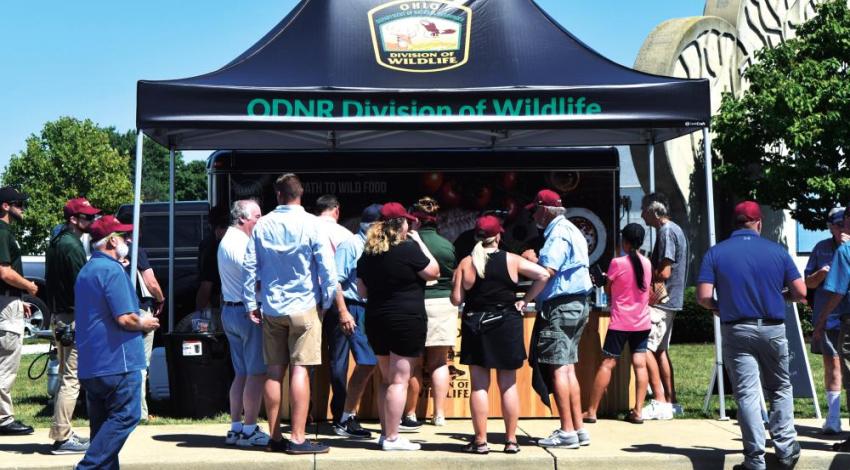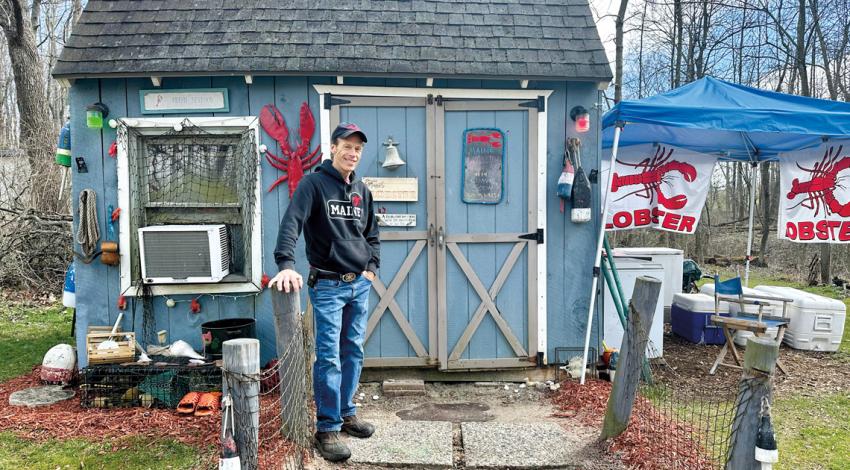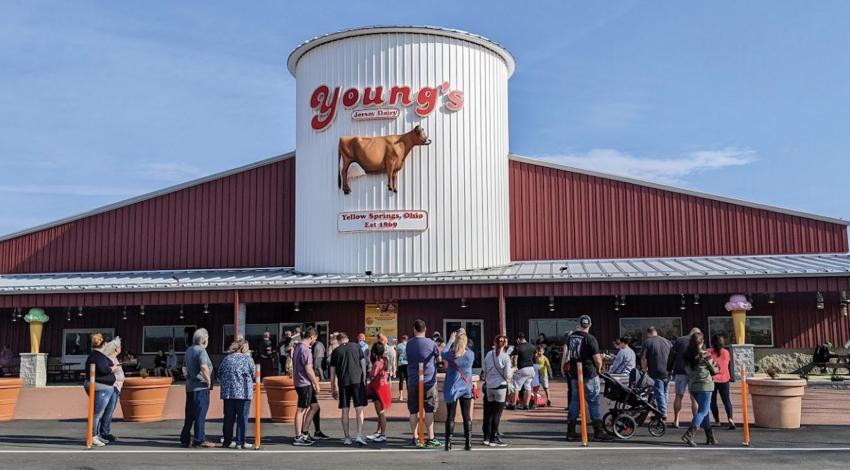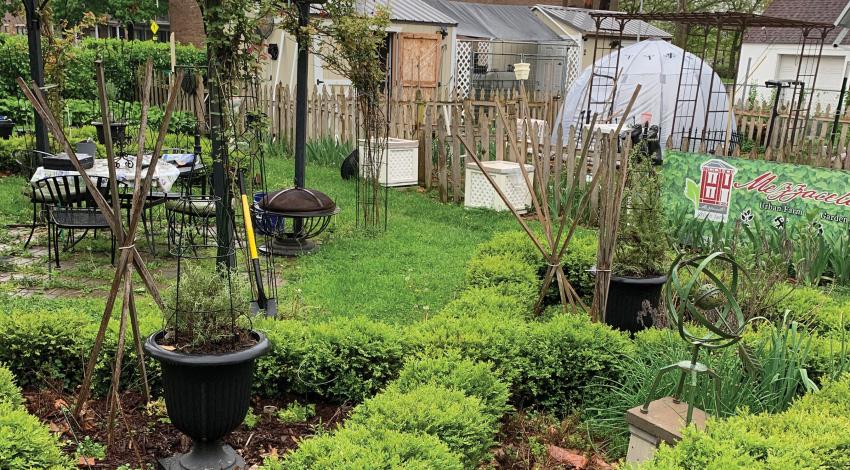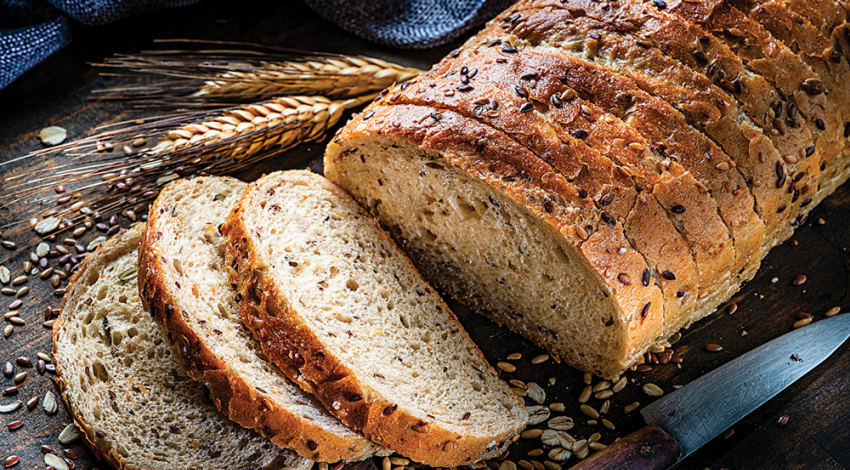food
Kendra Wecker, chief of the Ohio Department of Natural Resources’ wildlife division, swears she’s not trying to put any food trucks out of business.
The kitchen and its chefs cook and serve up free food created with wild-harvested Ohio game, including fish, fowl, and other critters. And Ken Fry, ODNR outdoor skills specialist, says it all began when he was cooking up such treats from the bed of a pickup truck with a pop-up tent at a Jefferson County farmers market a while back.
“It was so well-received that I presented the trailer idea to my supervisor and he liked it and said, ‘Let’s go with it,’” Fry says.
Along the road connecting Fredericktown and Amity in Knox County is a red wooden sign with a lobster on it, marking a driveway leading to 22 acres of wooded property featuring a creek, walking trails, two cabins and a 1961 Shasta Airflyte camper trailer for rent, a house, a
The road to Amity
After graduating from Ohio State University, Fletcher talked his dad into co-signing a loan for a lobster boat and moved to an off-the-grid family cabin in Georgetown, Maine. He spent the next 20 years as a professional lobsterer, hauling water to his makeshift shower and 200 traps’ worth of lobsters per day from the waters surrounding the island town.
It's no surprise that Ohio ranks in the top 10 of ice cream-producing states. Its rural heritage provides a steady supply of the main ingredient — and several families through history began traditions that remain in place today.
Velvet Ice Cream
Utica, 1914
Immigrant Joseph Dager arrived in Ohio in 1903 and began making ice cream in Utica in 1914. Within two years, he was producing 200 gallons of ice cream every month, and the creamy, velvety texture inspired the name Velvet Ice Cream.
In 1960, an old grist mill became the company’s permanent home. Ye Olde Mill houses a turn-of-the-century ice cream parlor that opened in 1970 and welcomes 150,000 guests each year.
A stroll through this Ohio farm leads you past a lovely formal garden, a koi pond, and two fountains before you reach the medicinal, culinary, and potager gardens.
Ten years ago, the property was an abandoned 1868 Italianate house and two adjacent overgrown lots. After much planning, digging, and planting, Mezzacello now produces high-quality, nutritious food and serves as a learning lab where Bruner and local students test ideas. The name Mezzacello (“little Monticello”) pays homage to another lifelong innovator: Thomas Jefferson, and his agricultural experiments at his iconic Virginia estate.
When Dan and Tawni Batdorf hit the road to their latest catering job, they bring a spacious kitchen with all the conveniences of home right along with them.
The Batdorfs started Red Barn Catering in 1998, working from the back of a pickup truck stacked with coolers, grills, and cooking utensils. One of their early engagements had them preparing 77 customer appreciation lunches for Ebberts Field Seeds, down the road from their Miami County farm. They still work that lunch, but today, the number of lunches they produce for the annual event has grown to about 630.
“We definitely needed something more than a pickup truck bed,” Tawni Batdorf says with a chuckle. “We needed a place out of the rain and the sun and a place to wash dishes.”
Chris Bihn is a born educator, and while he may have left the classroom, he’s more committed than ever to teaching. These days, his lesson plans involve the production of nutrient-rich and easily digestible food through an innovative process of crushing grain.
Bihn, a former high school teacher and a member of St. Marys-based Midwest Electric, heads a family business known as Our Fathers Food, which uses a patented technique for preparing organic grain and seed for human consumption that yields unlimited shelf life without chemicals, preservatives, enrichments, or nutrient loss.

